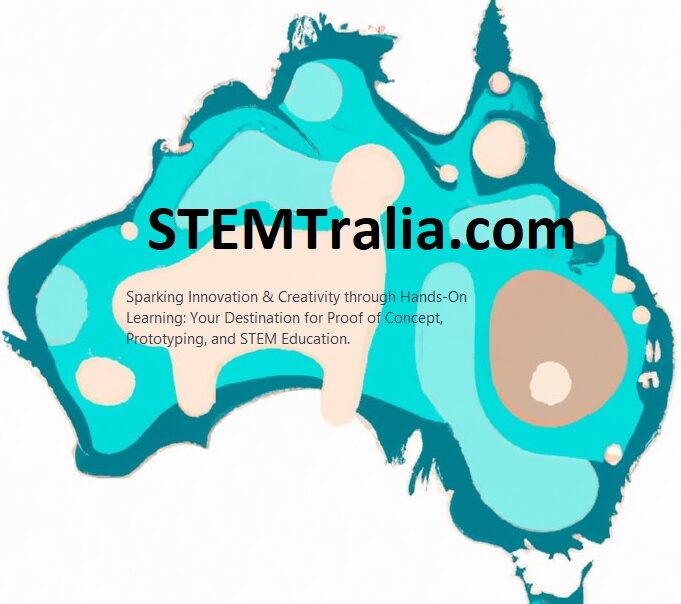Overview
In this project, students will explore the application of machine learning (ML) to predict future inflation rates using historical data from the ABS. By analyzing trends and factors that influence inflation, such as consumer price indexes, wage rates, and economic policies, students will train an ML model to forecast inflation. This hands-on experience not only introduces students to the complexities of economic forecasting but also demonstrates the power of ML in analyzing and predicting economic conditions.
Required Datasets from ABS
To accurately forecast inflation, students will utilize the following datasets available from the Australian Bureau of Statistics:
- Consumer Price Index (CPI): A measure of the average change over time in the prices paid by urban consumers for a market basket of consumer goods and services.
- Producer Price Indexes (PPI): Measures the average changes in prices received by domestic producers for their output. This is a leading indicator for CPI.
- Wage Price Index (WPI): Measures the change in the price businesses and the government pay for labor, excluding bonuses.
- Commodity Prices: For countries heavily dependent on commodity exports, the prices of key commodities can be a leading indicator of inflation.
These datasets provide a comprehensive overview of the factors affecting inflation rates, allowing for a multifaceted analysis.
How to Implement Machine Learning Model
Step 1: Introduction to Inflation and Data Exploration
- Objective: Familiarize students with the concept of inflation and its economic impacts. Introduce the ABS datasets, highlighting how each dataset can influence inflation forecasting.
- Activities: Initial data exploration using Python’s Pandas library to understand the datasets’ structure and visualize inflation trends over time using Matplotlib or Seaborn.
Step 2: Data Preprocessing
- Objective: Prepare the datasets for ML modeling by cleaning and integrating data, handling missing values, and selecting features.
- Activities: Teach students to preprocess data by merging datasets based on dates, encoding categorical variables (if any), and normalizing or standardizing numerical features to prepare for ML modeling.
Step 3: Building the ML Model
- Objective: Introduce linear regression and decision tree regression as methods for forecasting inflation.
- Activities: Guide students through training a regression model using scikit-learn, including splitting the data into training and testing sets. Discuss the importance of historical data in predicting future rates.
Step 4: Model Evaluation
- Objective: Assess the accuracy of the ML models in forecasting inflation.
- Activities: Evaluate the models using metrics such as Mean Absolute Error (MAE) and Mean Squared Error (MSE). Discuss the model’s performance and explore ways to improve accuracy, such as feature engineering or trying different ML algorithms.
Step 5: Application and Critical Analysis
- Objective: Use the trained model to predict future inflation rates under various economic scenarios.
- Activities: Predict inflation rates based on hypothetical changes in economic indicators. Encourage students to analyze the implications of their forecasts for consumers, businesses, and policymakers.
Deliverables
- A comprehensive Jupyter Notebook (free for all to use) documenting the data preprocessing steps, model training, evaluation, and predictions.
- A presentation or report summarizing the forecasting process, model accuracy, and the potential economic implications of the predicted inflation rates.
Learning Outcomes
- Hands-on experience with ML techniques and economic data analysis.
- An understanding of the factors influencing inflation and how to model these factors using ML.
- Skills in data preprocessing, ML modeling, and critical analysis of economic forecasts.
This project provides a practical introduction to using machine learning for economic forecasting, offering students valuable insights into both the technical aspects of ML and the economic theories surrounding inflation. By working with real datasets from the ABS, students gain practical skills that can be applied in future studies or careers in economics, data science, and beyond.
How does the above project implement DIKW Hierarchy:
The “Machine Learning Model for Forecasting Inflation” project also follows the Data, Information, Knowledge, Wisdom (DIKW) hierarchy, showcasing how raw data can be transformed into actionable insights. Here’s how it applies to this project:
Data
The raw datasets from the Australian Bureau of Statistics (ABS), including the Consumer Price Index (CPI), Producer Price Indexes (PPI), Wage Price Index (WPI), and commodity prices, represent the Data layer. This is the foundational level, where data is collected but not yet processed or analyzed.
Information
When students preprocess this data (cleaning, merging, and organizing it) and conduct initial explorations (visualizing inflation trends over time), they are turning data into Information. At this stage, the data becomes more structured and patterns or anomalies may start to emerge, but the reasons behind these patterns are not yet understood.
Knowledge
Knowledge is developed as students build and train machine learning models to predict future inflation rates. This involves understanding the relationships between various economic indicators and their collective impact on inflation. The process of selecting features, training models, and evaluating their performance helps students gain insights into the economic forces driving inflation.
Wisdom
Wisdom is achieved when students use the predictions made by their models to discuss potential future economic scenarios and their implications. This could involve analyzing how different inflation rates might affect policy decisions, consumer behavior, or business strategies. At this stage, students apply their knowledge in a broader context, considering ethical, social, and practical implications of their forecasts. They learn to make informed judgments and decisions based on a deep understanding of the data and its real-world significance.
Through this project, students navigate the DIKW hierarchy by:
- Collecting raw economic data (Data),
- Processing and visualizing this data to identify trends (Information),
- Analyzing these trends with machine learning to make predictions about future inflation rates (Knowledge),
- and Applying these predictions to discuss potential economic impacts and policy recommendations (Wisdom).
This structured approach not only enhances students’ technical skills in data science and machine learning but also deepens their understanding of economic principles and the practical application of these skills in making informed, wise decisions.
